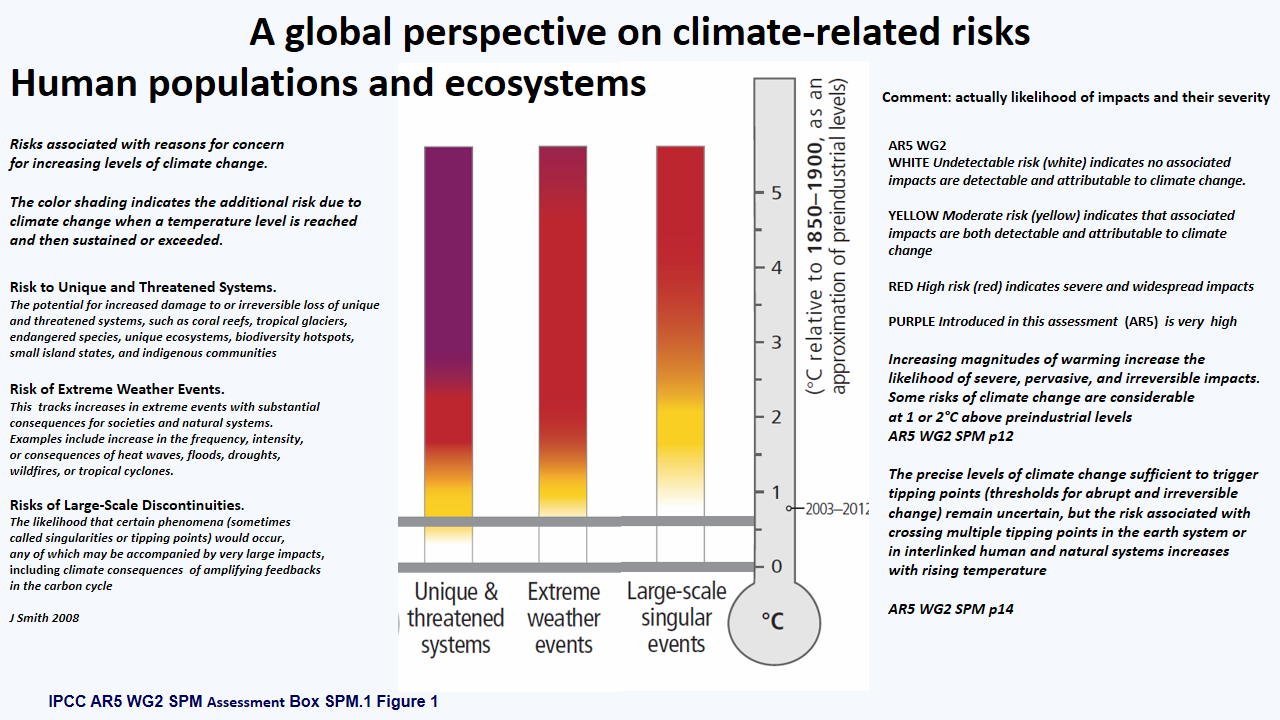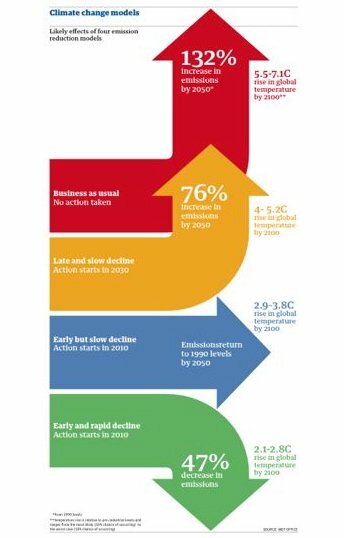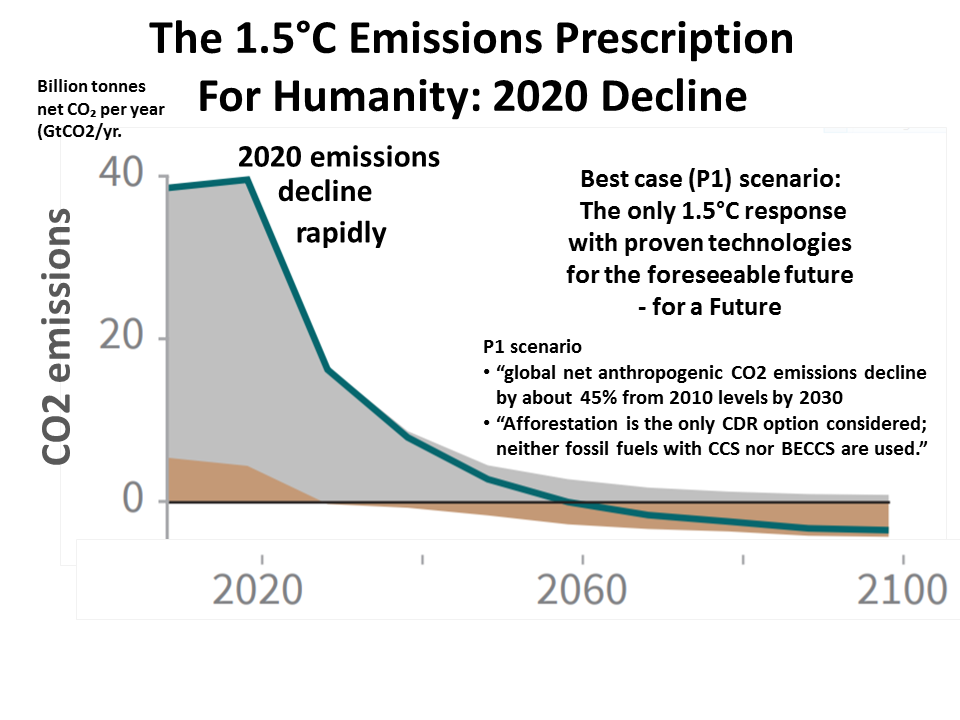CLIMATE CHANGE EMERGENCY EVIDENCE
This Evidence page links to all the information pages on the
CLIMATE CHANGE EMERGENCY MEDICAL RESPONSE website
— showing why global climate change today is certainly the greatest danger ever to the survival of billions of the most climate vulnerable, and all future generations, and why we are now all in peril, making this a state of global emergency,as the Oct 2014 BMJ has rightly said.
This brilliant video lecture by Dr Hugh Montgomery says it all
Here is a comprehensive chart of all impacts which provides overwhelming proof that the whole world is in a state of committed global climate change planetary emergency.
The simple definite emergency evidence is the combination of the already many disastrous impacts affecting all continents and all oceans at today's warming of 0.8C (IPCC AR5)- and today's absolute committed (locked in) warming of double today's 0.8C. The IPCC AR5 impacts chart speaks for itself, and these facts of the science prove our planetary emergency.

The evidence is overwhelming that the still accelerating concentrations of atmospheric greenhouse gases and ocean acidification are not only beyond dangerous but have been catastrophically dangerous for very many years (J. Holdren, 2008).
We are far above 350 ppm CO2 in the atmosphere
— way too far above.
In short, the evidence for the climate change emergency is that we need to get our atmospheric carbon dioxide concentrations below 350 ppm to avoid committing humanity global climate catastrophe in the future. This is because of large slow onset amplifying feedbacks, but we are currently at 400 ppm.
The science is definite that the only way to allow atmospheric CO2 to drop at all is for all industrial carbon emissions to stop. We must aim for zero carbon emissions in order for the global temperature to stop rising and for ocean acidification to stop increasing.
This now includes CO2 emissions from carbon feedbacks (though they are small at present), which have started kicking in. Carbon feedback emissions weaken the planet's capacity to absorb our extra emissions (Global Carbon Project, 2008).
A 2008 unique meeting of climate and public health experts remains highly relevant (excluding the peak petroleum part PP). Overview:Climate Change PP and Public Health.
Clearly, the entire world is in a state of dire emergency because today's committed (locked in) global warming far more than today's warming which has led to extraordinarily severe disasters affecting all continents, while there are no new international measures in sight. However, though a few leaders in the scientific and political worlds have urged recognition of this terrible global situation, international negotiations and national policy making are going on under the delusion that "dangerous" is still in the future.

The IPCC does not determine risks and does not define what would constitute dangerous interference with the climate system. The IPCC says that defining dangerous climate change is a value judgment that only the policymakers can make ...
— Stephen Schneider, a longtime lead author of the Intergovernmental Panel on Climate Change
There is a problem in how the scientific evidence is being managed. The IPCC assessment process is designed to assess on the basis of very high probability, not on risk (see Stephen Schneider's climate change website). In many cases, low-probability impacts (according to today's available research) present huge intolerable risks to large human populations but the assessments do not include these so-called low probability impacts, which are becoming higher probability as research builds.
The standard precautionary risk assessment formula of
Risk = Probability x Magnitude
would take care of most catastrophic risk-aversion situations (for which there should be zero tolerance) — but it is not being applied. This is in part because the assessments are not centred on the integrated cumulative risks to human populations (environmental health risks).

Global greenhouse gas emissions, atmospheric CO2 levels, deforestation,and fossil fuel use are increasing exponentially.

"When it comes to climate change, the scientific evidence has to be at the core of any decision-making. Governments need to understand the consequences of choosing particular targets, but they also need to understand what will happen if targets are missed or if they cannot be agreed on by all countries. Failures could have far-
reaching consequences. ...[T]he risks of dangerous climate change will not increase slowly as greenhouse gases increase. Rather, the risks will multiply if we do not reduce emissions fast enough." — Dr. Vicky Pope, Head of Climate Change Advice, Met Office Hadley Centre, UK
Links to Evidence Pages
-
Why is climate change an emergency?
-
Ignored — but essential — climate science
- UNEP 2009 Year Book and climate change
"NASA's James Hansen Says Atmospheric CO2
is Already Beyond Safe Limit"
'There's a big gap between what's understood about global warming by the scientific community and what is known by the public and policymakers.... Time is running out to prevent catastrophic consequences from global warming. Hundreds of millions of people will lose fresh water sources and hundreds of millions of others will be displaced by rising sea levels if fossil fuel emissions remain on their current course.
The evidence indicates we've aimed too high — that the safe upper limit for atmospheric CO2 is no more than 350 ppm.... To preserve creation, the planet on which civilization developed, we must draw down carbon dioxide to less than 350 parts per million'.
— Physicist James E. Hansen, Director of NASA's Goddard Institute for Space Studies
Doctors are careful to practise evidence-based medicine, which is informed by valid, rigorous and replicable research. Medical responses to the climate change emergency should also be based on sound, peer-reviewed research and not compromised by economics or politics.
The mission of CLIMATE CHANGE EMERGENCY MEDICAL RESPONSE includes educating healthcare and other professionals about the unprecedented planetary emergency of global climate change, to enable them to educate their professional associations and policy makers at all levels.
To meet these goals, this website aims to synthesize and provides links to the best and most current published literature for understanding the global climate change emergency, plus
- already occurring and inevitable IMPACTS
- current TRENDS, and
- RISKS to population health, especially the risk to vulnerable subpopulations and the risk to humanity from catastrophic climate change.
Return to Climate Change Emergency Homepage
| Share this page: | ||
The 2016 Planetary Health Alliance (2019 VIDEO)
Video Dr. H. Montgomery's 2018 lecture says it all

Lancet Countdown (Nov)2018 Report for policy makers
2017 WHO 5th Climate & Health Summit
2014 Lancet From Public to Planetary Health:
A Manifesto
2014 BMJ Climate Change & Human Survival
2014 BMJ Climate Change
is a Health Emergency
IPCC 5th Assessment
Climate & Health Council





Would you prefer to share this page with others by linking to it?